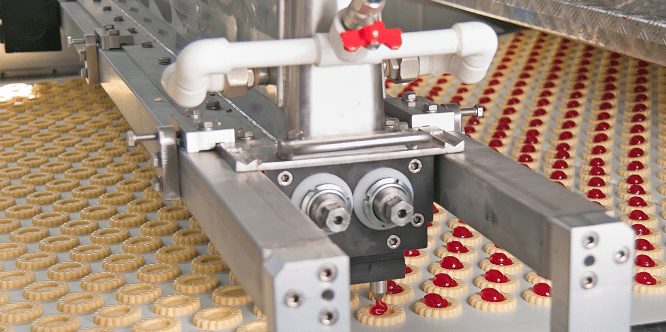TAKEAWAY: The pandemic and subsequent supply chain crisis have brought the relationship between food security and worker health into sharp focus. Delivering global food security means keeping workers healthy, and unfortunately, in several vital areas, food manufacturing, packing and transportation sector employees are at risk.
Jump Ahead
Food industry workers had a 60% higher rate of occupational illness and injury than workers in non-food industries. Their lost-time injury rate was more than twice as high. And while occupational deaths remain relatively rare, the risk is 9.5 times higher in the food industry than in other sectors. For illness, injuries and death, these increases are significant for nearly every area of the food industry.
Occupational testing is one way that employers can significantly reduce illness, injury and death among food industry workers. As a result, a growing number of food industry employers are launching testing programs. Here is what you need to know.

SureHire offers a wide range of occupational testing programs and additional resources to support employers and their workers, including audiometric testing, fitness-to-work testing and lung health testing.
Occupational Testing Trends in the Food Manufacturing, Processing, Packing, and Transportation Industry
Ensuring Optimal Lung Health
Respiratory illnesses are common in the food manufacturing industry. Repeated, long-term exposure can lead to lung diseases, including asthma and allergies. Milling, bread and pastry making, cereal handling, and grain cleaning and packaging are all considered high-risk occupational activities.
Some of these lung issues are irreversible. For example, several studies have recently revealed that workers in the flavouring industry are at increased risk of developing bronchiolitis obliterans. Known as popcorn lung, after its initial discovery in a microwave popcorn factory, this devastating respiratory disease leads to damage to the lining of the airways and narrowing of the small airways resulting in permanent airway obstruction. The CDC recommends appropriate PPE, training and ongoing lung health testing, including spirometry, to help prevent this devastating disease.
Ensuring a tight-fitting mask can also help prevent occupational lung damage, and regular mask fit tests ensure workers have the best protection possible. Regular training and education around the appropriate use of PPE and lung health monitoring are also critical to the health and safety of food industry workers.
Reducing Injury
As with other manufacturers, the food industry is at increased risk for injuries. And in a study of industry injuries, the poultry industry had the 12th highest number of severe injuries, higher than the automotive, steel and other high-hazard industries.
But severe injury is just one issue. Workers in this industry, particularly in meatpacking, must also work in extreme temperatures, and much of the processing work they must perform involves repetitive movements. This puts workers at increased risk for musculoskeletal disorders (MSD) that can, in turn, contribute to lost productivity and absenteeism.
Occupational Safety and Health Administration (OSHA) data suggest that repetitive motion injuries among beef and pork processing workers are nearly seven times that of other private industries. In one plant alone, 76 percent of workers had abnormal nerve conditions in at least one hand, according to a 2015 report by the National Institute for Occupational Safety and Health.
Safety training can help reduce injuries, while fitness-to-work testing can help ensure that a worker can meet the strenuous physical demands of jobs in this sector. This keeps workers safe, but fitness-to-work also helps employers reduce the costs of lost productivity and absenteeism due to injury. In fact, several studies have established a strong link between pre-placement testing and a significant reduction in injury. One study suggested that this type of testing could reduce the number of lower back injuries by as much as 90%.
Preventing hearing loss
Food industry workers suffer hearing loss at an astonishingly high rate. According to the Bureau of Labor Statistics (BLS), the rate of hearing loss in animal slaughtering and processing was 43.0 per 10,000 workers, compared with a rate of 10.9 for manufacturing and 1.8 for all private industries. The hearing loss illness rate in animal (except poultry) slaughtering was 81.5.
Both loud noise and ototoxic chemicals can contribute to and exacerbate hearing loss among workers in this industry. The Centers for Disease Control (CDC) includes audiometric testing as one of the five pillars of an effective hearing loss prevention program in the workplace. The type of testing establishes a baseline and then leverages ongoing testing to monitor workers’ hearing and flag any changes. Appropriate PPE, as well as safety and education training, can also help.
The Challenges of Implementing Occupational Testing Programs in the Food Industry
The food manufacturing, packaging and transportation employers face unique challenges that make it difficult to implement occupational testing programs. First, many companies operate a much lower profit margin putting a comprehensive occupational testing program sometimes out of reach. Despite recent federal initiatives to attract new workers, they also have a very high turnover rate.
Again, this turnover rate can make it challenging to implement new testing initiatives or to follow up with existing employees. Finally, immigrant workers make up a very high percentage of the workforce in this industry. The challenges with this population include delivering occupational testing in various languages to ensure it is understood and successful.
The future of occupational testing in the food industry
Despite these challenges, occupational testing will likely become even more critical to the food manufacturing, packaging, and transportation sector. Complex and evolving compliance standards, safety regulations, and even pressure from worker’s unions and other organizations involved with worker protection are likely to keep the focus on occupational safety. The production of food and the security of food supply chains will only become more crucial as global pressures, including climate change, continue to escalate. Many of these factors are out of the control of employers. Occupational safety and occupational testing are not.

SureHire offers a wide range of occupational testing programs and additional resources to support employers and their workers, including audiometric testing, fitness-to-work testing and lung health testing.
You May Also Be Interested In…
- Do You Have Reasonable Suspicion?
 Employers cannot initiate reasonable suspicion testing without first going through the 5-step process. Reasonable suspicion training provides critical information about how to initiate reasonable suspicion testing, including the 5-step process and other tools that employers can use to help manage the misuse of alcohol and drugs in the workplace.
Employers cannot initiate reasonable suspicion testing without first going through the 5-step process. Reasonable suspicion training provides critical information about how to initiate reasonable suspicion testing, including the 5-step process and other tools that employers can use to help manage the misuse of alcohol and drugs in the workplace. - An Employer’s Guide: What You and Your Employees Need to Know About DOT Drug & Alcohol Testing
 When implementing or maintaining DOT Drug & Alcohol testing, there are key areas that employers should consider.
When implementing or maintaining DOT Drug & Alcohol testing, there are key areas that employers should consider. - SureHire Occupational Testing Acquires COHR Health: A Positive Step Towards Safe, Healthy, Productive Workforces and Communities
 We are thrilled to announce that today, May 6, 2024, SureHire Occupational Testing has officially acquired COHR Health, a well-known leader in occupational health services. Read on…
We are thrilled to announce that today, May 6, 2024, SureHire Occupational Testing has officially acquired COHR Health, a well-known leader in occupational health services. Read on… - Occupational Testing Use Case – Mining
 In this case study, we will explore how mining companies can use various types of occupational tests to reduce Total Recordable Incident Rates (TRIR) long term.
In this case study, we will explore how mining companies can use various types of occupational tests to reduce Total Recordable Incident Rates (TRIR) long term. - 9 Strategies to Keep Workers Cool on Drilling Sites During Hot Summer Months
 This article delves into strategies to keep workers cool and safe on drilling sites during the hot summer months.
This article delves into strategies to keep workers cool and safe on drilling sites during the hot summer months. - Hearing Conservation Basics: How to Manage Occupational Noise
 Learn how to proactively mitigate occupational noise risks and help prevent NIHL among workers.
Learn how to proactively mitigate occupational noise risks and help prevent NIHL among workers.

